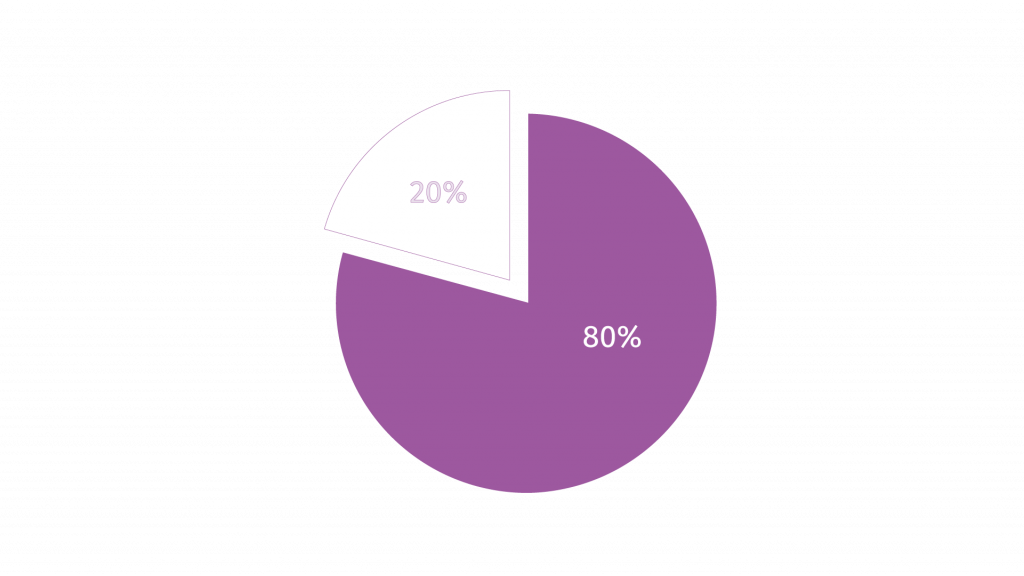Improve your data quality sustainably with automated data acquisition
Data quality problems arise in your own team or in other departments, but also due to faulty data records from suppliers. Sometimes they cannot even be assigned to a clear source. Which doesn’t make it any easier for data managers and decision-makers. We show you how you can not only reduce errors with immediate measures, but also sustainably improve the data quality in your company.

Poor data quality is part of everyday life for many
More than 80% of the data managers surveyed in a study, including data producers and data consumers, regularly have to deal with data quality problems.
The reasons are obvious: more complex data, different data formats, versatile storage locations and tools, partly digitized, partly manual processes. In addition, there is a higher turnover of employees and suppliers.
Two things that currently concern data managers the most are good data quality and data integration. In this regard, half of the respondents use processes and tools to analyze and assess data quality issues. Among the main goals in the company we find:
- Optimizing data quality
- Making data more accessible
- Improve communication and collaboration with stakeholders
- Improve data documentation
- Standardize data
- Speed up data collection
So how do organizations get to high data quality? Before we talk about what you can actively do to improve your data quality, let’s start at Step 1.
Step 1: What are the prerequisites for higher data quality?
As you’ve probably noticed yourself, poor data quality is not something that can be fixed with an intervention. If you want to improve your data quality, you go through a process that involves an organizational rethink throughout your company. Taking data quality to the next level requires all departments to understand the importance of high quality data. Because once all departments understand that they benefit from capturing data cleanly and consistently, and awareness of a data-driven corporate culture is embedded, effective data management can be lived. Or in other words: Your company structures changed, responsibilities redefined, and policies put in place.

Step 2: How can the quality of your data actually be measured?
Policies all well and good, but what does “high data quality” actually mean?" And is it measurable? Basically, your data should meet the following criteria:
- Access security
- Integrity
- Completeness
- Timeliness
- Relevance
- Credibility
To help you evaluate your data, here are some initial measures you can apply within your organization.

Immediate actions to improve your data quality
1. Define data policies
Implement policies that clearly dictate who collects, stores, and shares what data with the team and how. Where data is collected and in what format. Special attention should be paid to how sensitive data is shared. Is it stored centrally in a place where it can be directly reviewed, added to, and analyzed? Or is it perhaps sent back and forth between colleagues in Excel sheets? Do you know how data is shared in your company? Does every team handle it differently? Then you should define uniform ways of doing this as soon as possible. Perhaps you are already working with data capture software. This way, you can cut down on data chaos and also avoid fatal errors or even losses that can occur when data is collected and shared manually.
2. Train your employees
What does a reliable and consistent database mean for the work of all employees? One example: Sales can adjust their planning much faster with the help of real-time data and thus react to market developments. Constantly updated sales planning makes it possible to optimize the manufacturing process and plan resources, which in turn provide information about necessary sales measures. Thus, improved data quality is not only decisive for strategy and the direction of measures, but also facilitates cooperation and communication between departments.
Not to mention the decreasing productivity due to manual data repair and troubleshooting, as well as high costs associated with it. Introduce a series of workshops or seminars to help your team understand the consequences of high data quality.
3. Implement quality assurance processes
More specifically, review your data quality by setting goals that you regularly review against pre-determined metrics. For example, measure common errors as a percentage and set what the error rate may be after 4 weeks or a quarter.
Looking at it every now and then is unlikely to lead to any change, and errors will not come to light in this way. If, on the other hand, all departments work on one and the same quality target, you will make slow but sure progress. So to ensure data quality, put in place firm structures where the data policies you set are reviewed and evaluated across the organization.

4. Automate your data capture
A much easier way to avoid bad data and laborious quality management processes is to automatically capture all data in a central software. Thanks to automated data entry, you fix the problem right at the root and save yourself tedious troubleshooting.
How does it work exactly? With automated data entry, you do away with the jungle of planning files that then have to be painstakingly merged into a unified model. Imagine - no more error merry-go-round that you have to set in motion every time. The automated collection of planning figures is done via a central web-based software, to which all participants have secure access.
In the software, you as the central planner create the planning forms for all participating departments. The decentralized planners enter their data into the planning masks that have been prefabricated for them. These are accessible to them via the browser using their own login data. They do not need any software installation or special prior knowledge. The automated data management not only ensures that all authorized planners can view the current planning status at any time, but also improves your data quality at the same time: By entering fixed values, the planners’ data follows a fixed structure, which means that a large number of errors can be avoided. Duplicate storage and loss of data are also a thing of the past.
We will show you how planning in the cloud affects the entire controlling process and collaboration, using Michael Fink, Head of Controlling, as an example. Would you like to learn more about data collection in the cloud. Click here for the free trial version.
